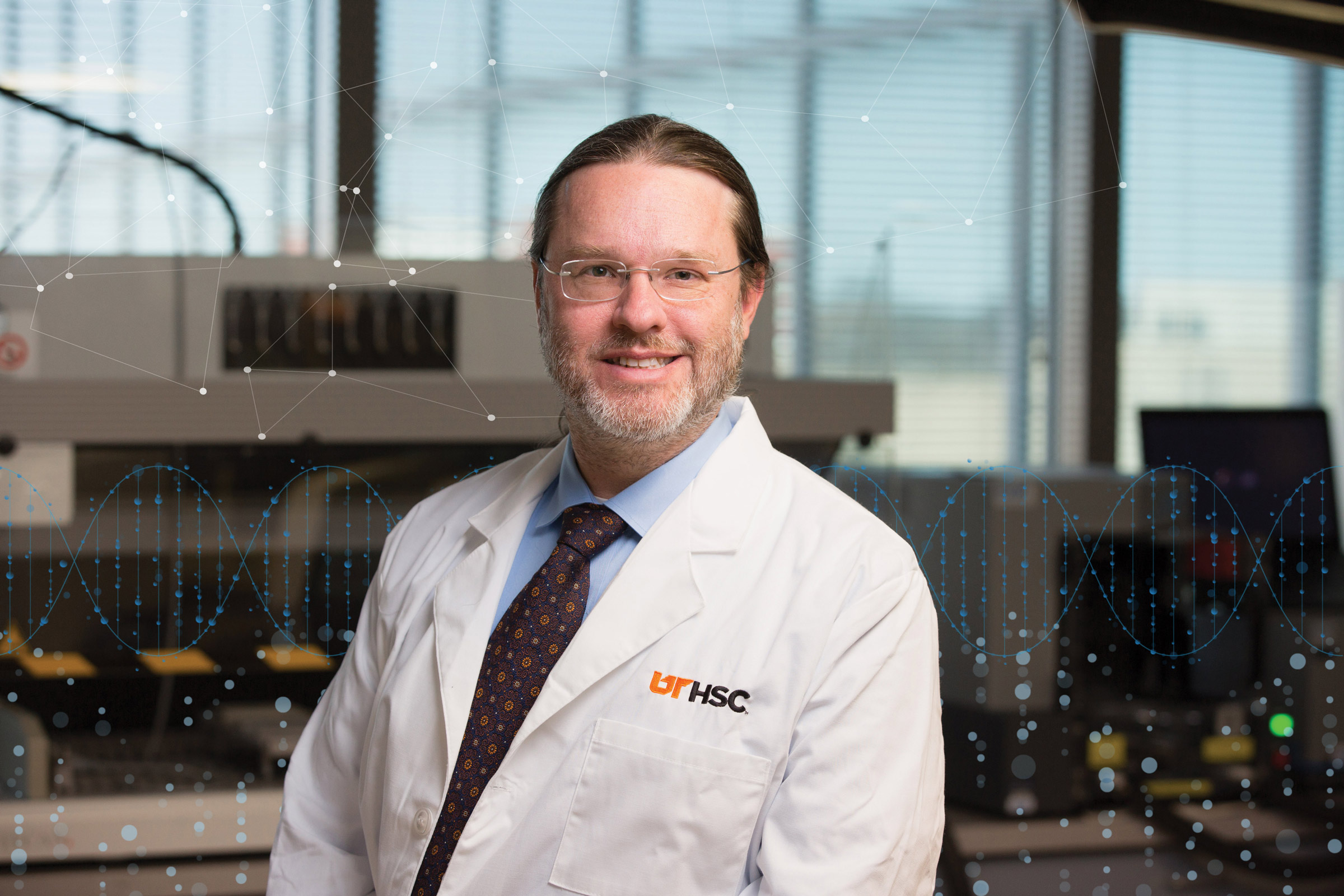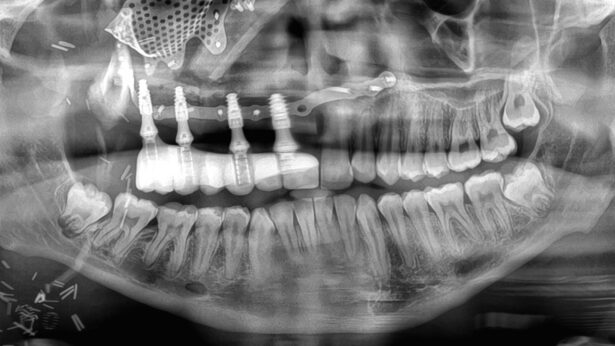By Peggy Reisser | Photos by Allen Gillespie
Neil Hayes is a show-me kind of guy.
Tell him something, and chances are good he’ll ask for the data and how it was measured.
Good thing, too, because this tenacious skeptic with an eye for the smallest detail in the big picture has his sights set on unlocking the secrets of a disease that in many ways is both familiar and elusive. As a physician-scientist at the University of Tennessee Health Science Center, he’s in hot pursuit of cancer and has already played a key role in one of the most dramatic breakthroughs in understanding the disease to date.
Recruited to UTHSC a little more than a year ago, Hayes was one of the leaders of The Cancer Genome Atlas (TCGA), a flagship team science effort of the National Institutes of Health and the National Human Genome Research Institute to understand cancer at its molecular level using genome sequencing and extensive data analysis.
The project, which began more than a decade ago and cost more than $300 million, wrapped up a major phase last May with much fanfare. It published findings identifying genomic changes or mutations in cells of 33 types of cancer from head and neck cancer to breast cancer and stomach cancer. Armed with this knowledge, researchers and clinicians can move closer to personalized treatment for cancer patients, thereby changing the game for cancer care.
A Disease of DNA
“Cancer is at some level a genetic disease. It is a disease of DNA,” says Hayes, who is the Van Vleet Endowed Professor in Medical Oncology and the division chief of hematology and oncology at UTHSC. “It’s a disease where something is wrong with the DNA of the cells that are making the tumor.”
When the first complete sequence of the human genome was published in 2003, it paved the way for scientists like Hayes to be able to assess DNA at the level and scope needed to characterize the alterations found in cancer cells. Put simply, with the DNA of a normal cell established, comparisons could then be made in the DNA of cancer cells.
“The Cancer Genome Atlas is a road map,” he says. “It’s a way of starting off from 10,000 feet or from space and to sort of say what really is the landscape of cancer. It’s really the landscape of alterations of DNA and RNA. And, like any atlas, you can zoom in closer and closer and closer to it because it’s a very complex landscape. You can really zoom in and understand the topography of a specific disease, like head and neck cancer, but you can zoom out and say, ‘Well, across many tumors, they share a common feature.’”
In the end, Hayes and his fellow researchers looked at abnormal cancer genomes in tumor cells from about 11,000 patients, 500 each representing more than 30 different tumor types, and then compared those results with the normal cell genome and across the tumor types to see what alterations were common and what were not.
“It was that comparison that created this enormous data set to describe abnormalities in cancer at the DNA level,” Hayes says of the TCGA. He was a leader of a site at the University of North Carolina, one of 11 sites for the study and the site that did all the sequencing of RNA, which controls abnormal genetic expressions in cancer cells.
“The simplest incentive would be to connect alterations directly to treatments, and in some cases that has worked,” he says. “It won’t surprise you to hear, that’s too good to be true. Many of these mutations in cancer are not easily druggable, but these are the mutations we have, and these are the alterations we have, and what can we do based on these facts is to think about how to classify patients into those with worst prognosis, better prognosis, different prognosis, different cancer stories. Then, we can think about taking it forward to studying the tumors and designing better therapies, understanding the tumors better, so that we can move the ball down the field for human health.”

Becoming a Physician-Scientist
To call Hayes an overachiever would be an understatement. He holds M.D., Master of Public Health and M.S. credentials. As a chemotherapy physician, he sees patients with head and neck cancers as well as tumors of the mouth, throat, tonsils, tongue and salivary glands. He also conducts and oversees research in his labs at UTHSC and St. Jude Children’s Research Hospital.
“I’ve just played to my strengths,” he says.
A native of Winston-Salem, North Carolina, he received a bachelor’s degree in chemistry from Davidson College, a medical degree from the University of North Carolina at Chapel Hill, and a Master of Public Health degree from the Harvard School of Public Health.
He completed his residency in internal medicine at the Boston City Hospital in the Boston University School of Medicine program and fellowship training in hematology-oncology at the Tufts New England School of Medicine. There, he also completed a master’s degree in clinical research. As part of his fellowship training, he did postdoctoral training at the Dana-Farber Cancer Institute.
Along the way, he became hooked on statistics and data,their application to medicine and their role in improving patient care.
“There are lots of reasons to be in medicine. In my case, it really was just a natural draw for me. It was a connection between science and people,” he says.
“I think that connection between the lab and the clinic is very motivating, so part of my skill set is being able to connect those motivating examples of successes, failures, opportunities between the clinic and the lab, so that it can really inform my research and inform the conversation around research.”
An Eye on the Prize
“Nature is not random,” Hayes says. “There are so many important things that are happening (in cancer research and care) that are measurable and can be deciphered, and I like being a part of that.”
Since joining UTHSC, Hayes has added visionary leader to his multiple roles in battling cancer. He is one of the key leaders working to build the university’s stature in cancer care, research and education.
“Dr. Hayes is a world-renowned leader in cancer genomics,” says Scott Strome, dean of the UTHSC College of Medicine. “He is also deeply invested in the mentorship of younger scientists. These skills, along with his organizational acumen and patient-care experience, will contribute greatly to the ability of UTHSC to build a world-class cancer program with the ultimate goal of NCI (National Cancer Institute) designation.”
As Hayes continues to focus on cancer at both the macro and the micro level, how it acts in the body and how it acts at the cellular level, many answers are as yet unknown. However, one fact remains immutable, he says.
“This is one thing about research—for better or worse, you’re never done.”



